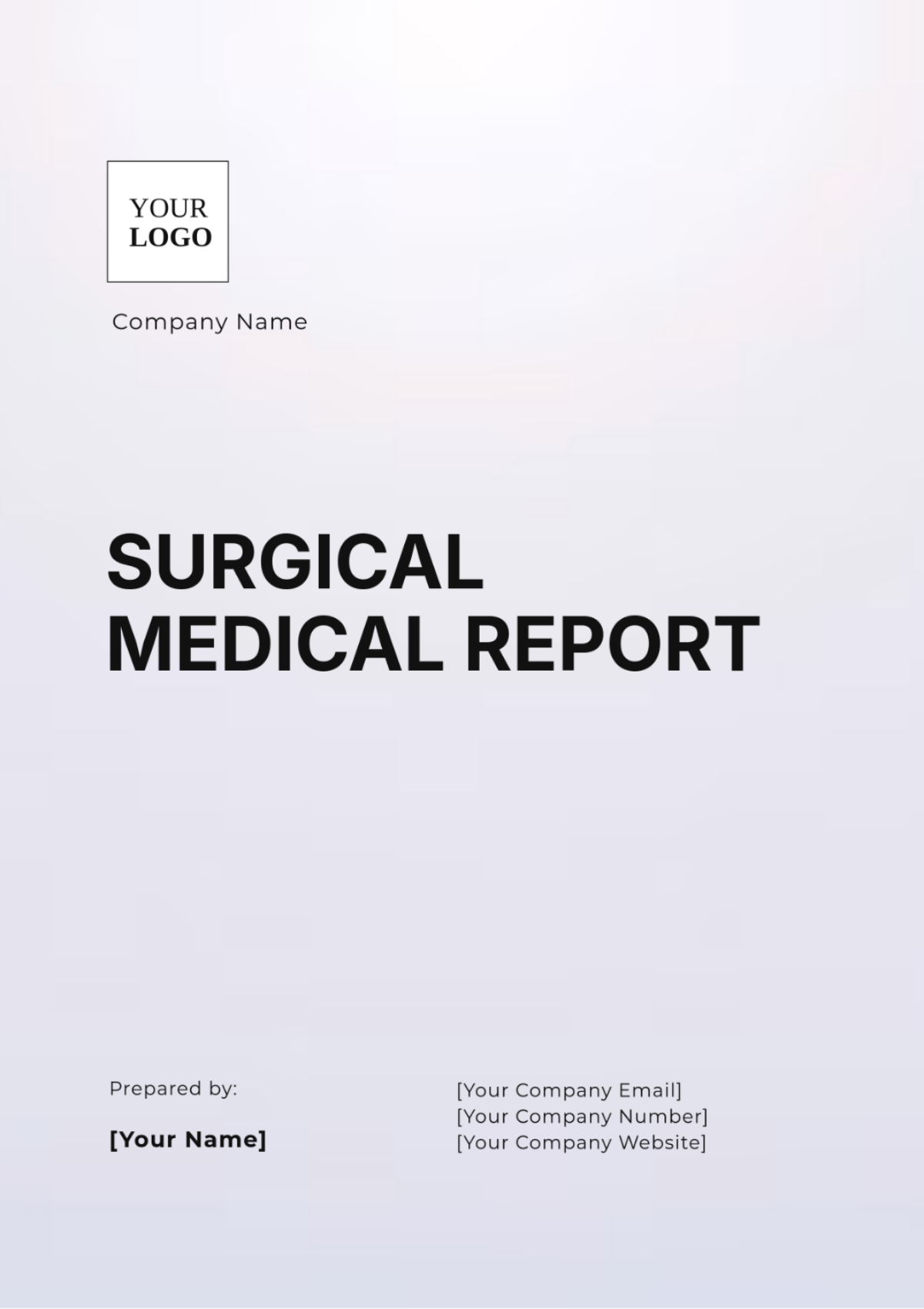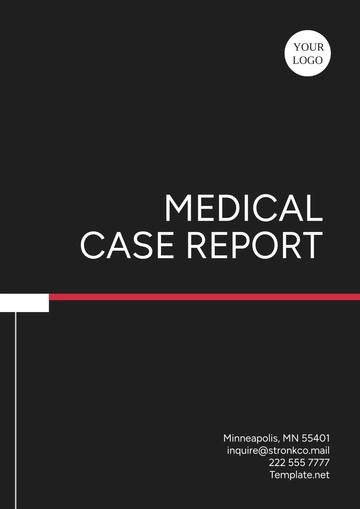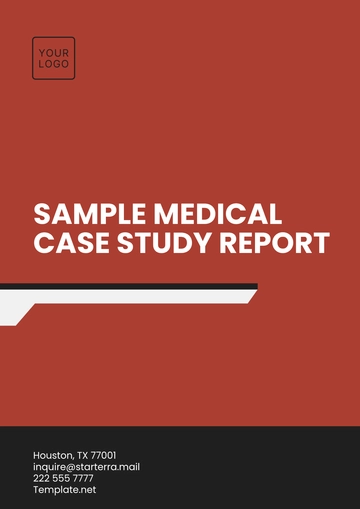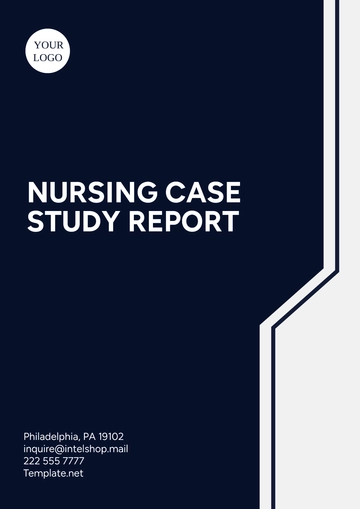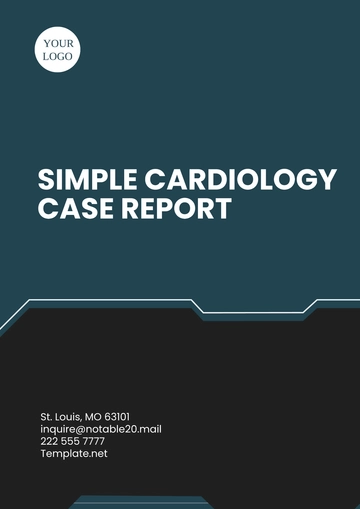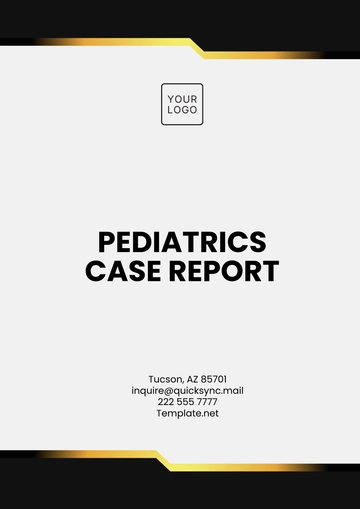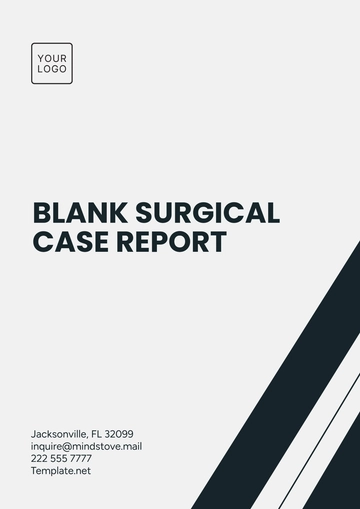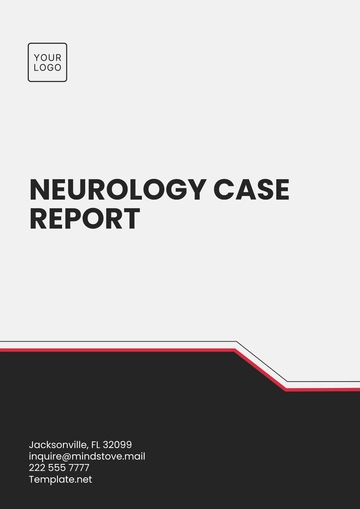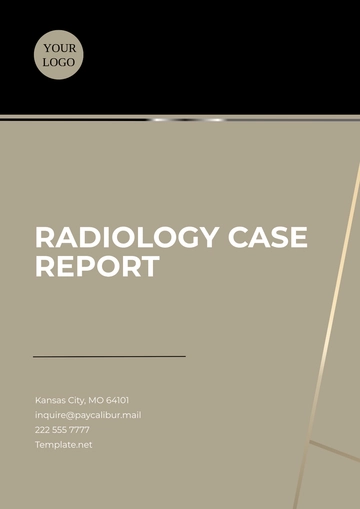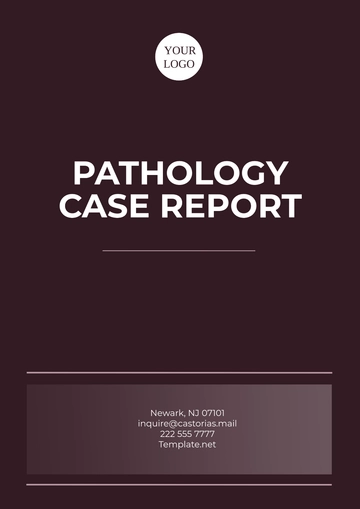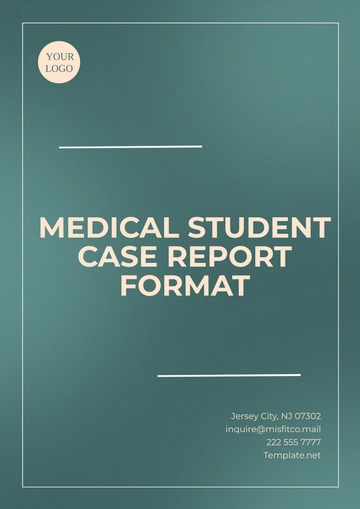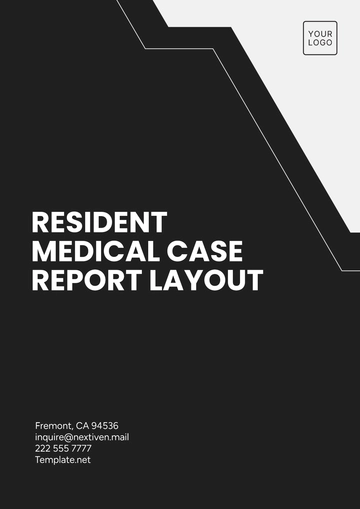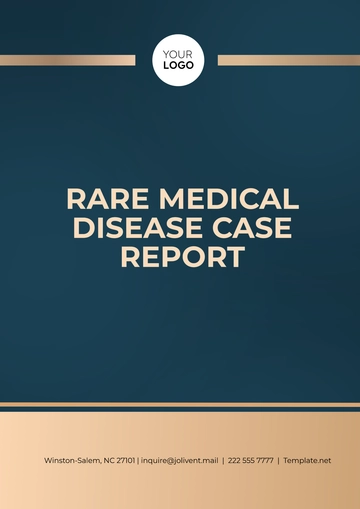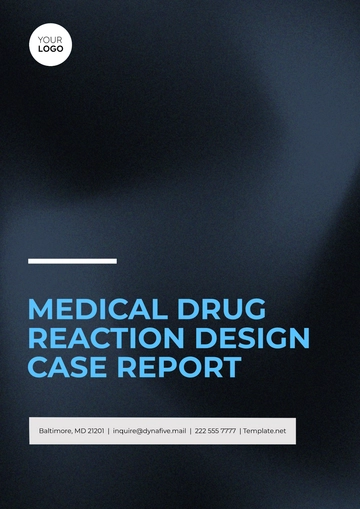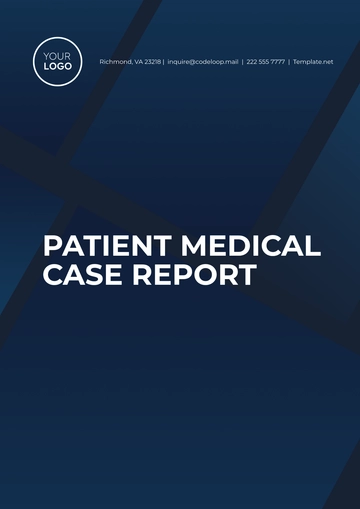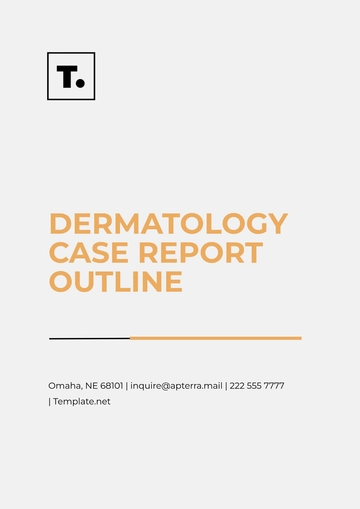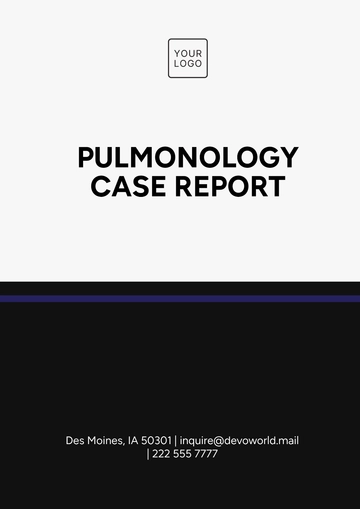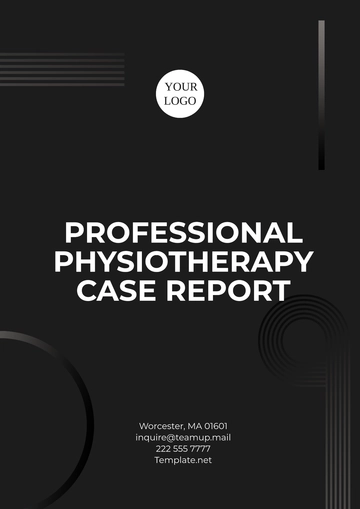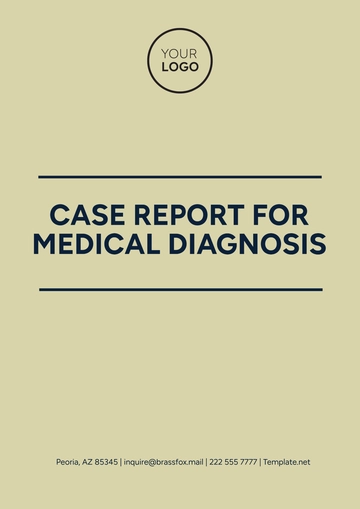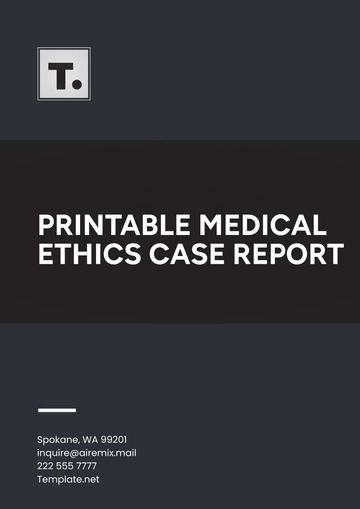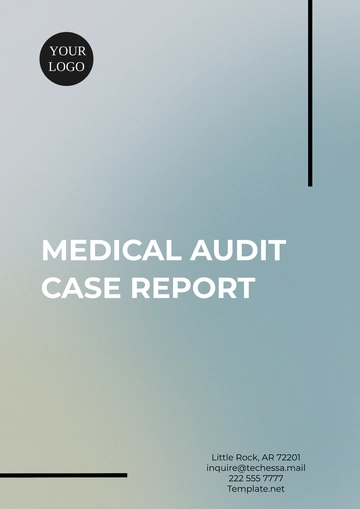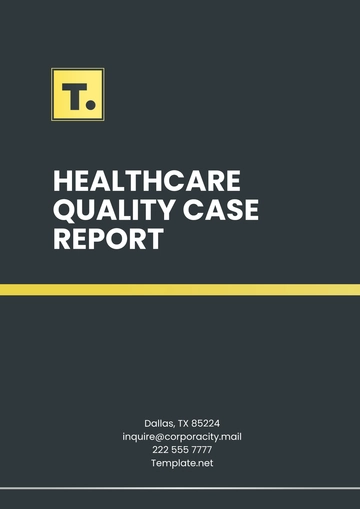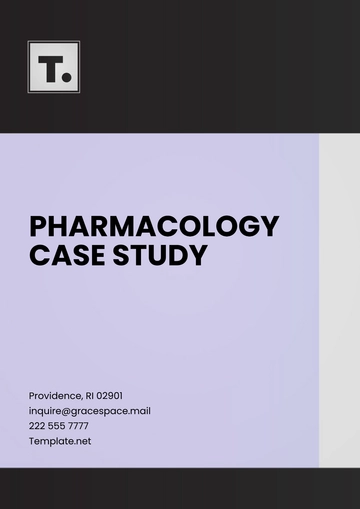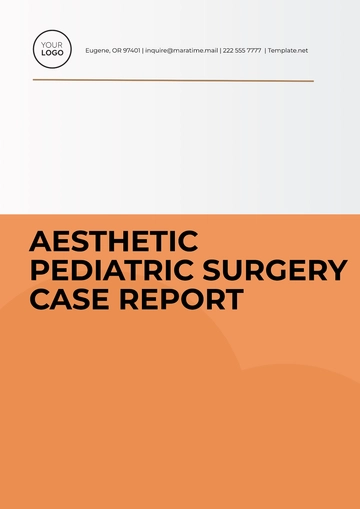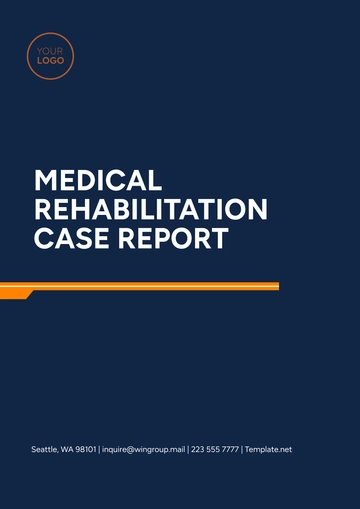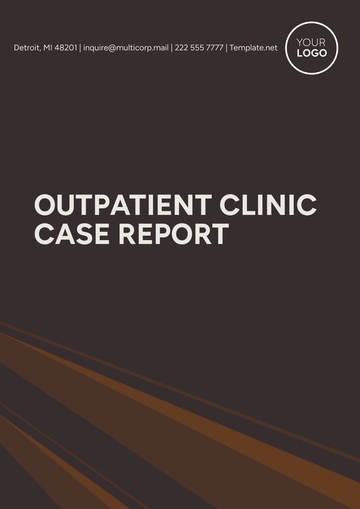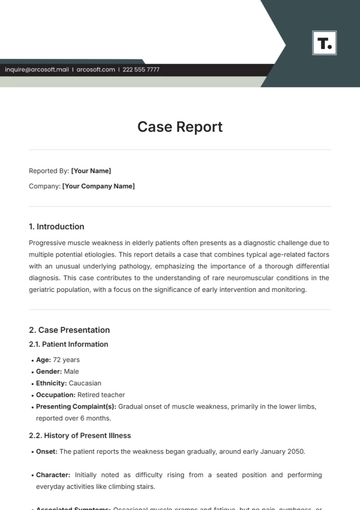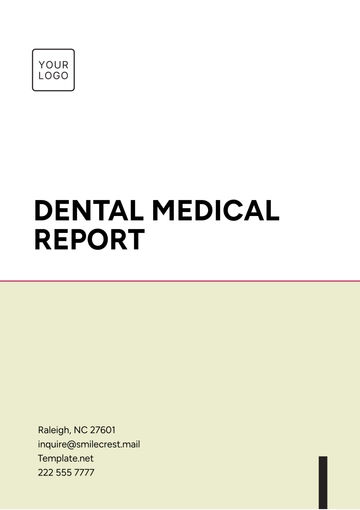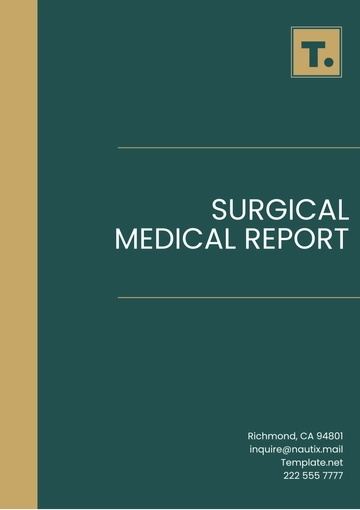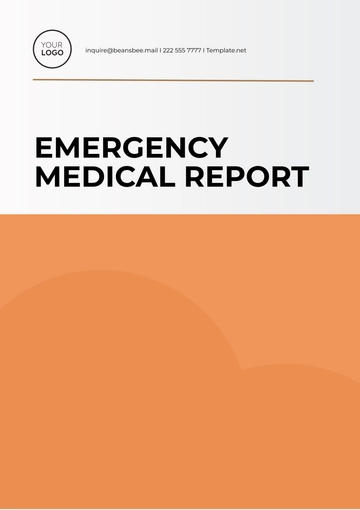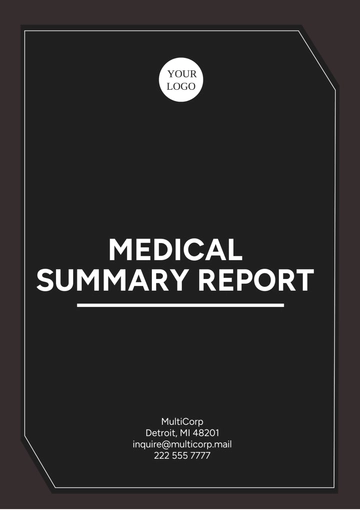Surgical Medical Report
Patient Information
Patient Name: | [Your Name] |
Patient ID: | 123456789 |
Date of Birth: | January 1, 2050 |
Gender: | Female |
Contact Information: | 123-456-7890 |
Diagnosis
Preoperative Diagnosis:
Postoperative Diagnosis:
Procedure Performed:
Indications for Surgery
The patient presented to the emergency department with complaints of severe right lower quadrant pain, nausea, and vomiting. The physical examination revealed tenderness in the right lower quadrant with rebound tenderness. A CT scan of the abdomen and pelvis confirmed the diagnosis of acute appendicitis, showing an enlarged, non-perforated appendix with surrounding inflammatory changes.
Anesthesia
Surgical Findings
Operative Technique
Positioning: The patient was placed in a supine position on the operating table, with arms secured at the sides and appropriate padding.
Incision: Three small incisions were made:
Procedure Steps:
The abdomen was insufflated with carbon dioxide to create a pneumoperitoneum.
A laparoscope was inserted through the umbilical incision, and a thorough exploration of the abdominal cavity was performed to assess any additional pathology.
The inflamed appendix was identified and carefully dissected free from the surrounding mesenteric tissue using electrocautery.
The mesoappendix was clamped, cut, and ligated with absorbable sutures.
The base of the appendix was secured with a circular endoscopic stapler, ensuring hemostasis.
The appendix was removed through the lateral incision, and the operative field was irrigated with sterile saline to remove any debris.
Closure: The fascial layers of the 10 mm incision were closed with absorbable sutures, while the skin incisions were closed using absorbable sutures and Steri-Strips. A sterile dressing was applied.
Estimated Blood Loss
Specimens Obtained
Complications
Postoperative Plan
The patient will be monitored in the recovery room for vital signs (BP, HR, O2 saturation) and pain management using IV analgesics (e.g., morphine 2 mg IV as needed).
Clear liquids will be initiated postoperatively, progressing to a soft diet as tolerated based on the patient's recovery.
Antibiotics (e.g., cefazolin 1 g IV) will be continued for 24 hours postoperatively.
The patient will be educated about postoperative care, including incision care, signs of infection, and activity restrictions.
A follow-up appointment is scheduled for October 7, 2055, to review pathology results and assess recovery. The patient will be advised to seek immediate medical attention if experiencing fever, increased pain, or other concerning symptoms.
Report Templates @ Template.net
